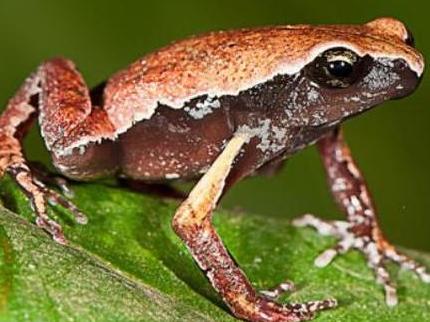‘Mysterious’ new frog species discovered in roadside puddle
Astonishing find made by PhD student in India

Your support helps us to tell the story
From reproductive rights to climate change to Big Tech, The Independent is on the ground when the story is developing. Whether it's investigating the financials of Elon Musk's pro-Trump PAC or producing our latest documentary, 'The A Word', which shines a light on the American women fighting for reproductive rights, we know how important it is to parse out the facts from the messaging.
At such a critical moment in US history, we need reporters on the ground. Your donation allows us to keep sending journalists to speak to both sides of the story.
The Independent is trusted by Americans across the entire political spectrum. And unlike many other quality news outlets, we choose not to lock Americans out of our reporting and analysis with paywalls. We believe quality journalism should be available to everyone, paid for by those who can afford it.
Your support makes all the difference.A new species of frog has been discovered in an unlikely location – a roadside puddle.
Researchers found the new genus in stagnant rainwater in the Western Ghats, a mountain range in southern India famed for its biodiversity.
Sonali Garg, a PhD student at Delhi University, and her supervisor SD Biju, have named the new species Mysticellus, a Latin term alluding to the creature’s diminutive size and mysterious nature.
Ms Garg first came across tadpoles of the frog – which has a marble-patterned underside – during routine field surveys in the region’s Wayanad district in 2013. After further search, she finally found large groups of around 200 adults in 2015.
Confirmation it is an entirely new species came after prolonged research including DNA testing, and were published in the new edition of the nature journal Scientific Reports.
“Our discovery of this new frog genus from one of the most explored and researched regions in the Western Ghats indicates that documentation of amphibians in this globally recognised biodiversity hotspot is still far from being complete,” Ms Garg told the BBC.
“This frog went unnoticed until now probably because it appears for less than four days for breeding activities and lives a secretive lifestyle for the rest of the year.”
She called on the site to be preserved to save the new discovery from immediate extinction threats.
“Indian amphibians face various extinction threats, especially due to habitat loss and degradation,” she said. “The only known population of the new genus is found in a wayside area disturbed with vehicular movement, plantation activities and human settlements.
“Since little is known about the habitat requirements and the distribution range of the new frog, the specific site needs to be preserved.”
It is not the first such astonishing find to be made in the Western Ghats. In 2016, a tree-dwelling frog, previously thought to have been extinct for a century, was discovered alive and well in the region.
Join our commenting forum
Join thought-provoking conversations, follow other Independent readers and see their replies
Comments